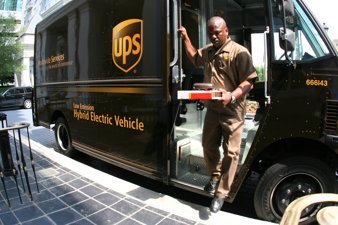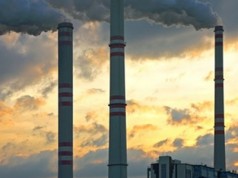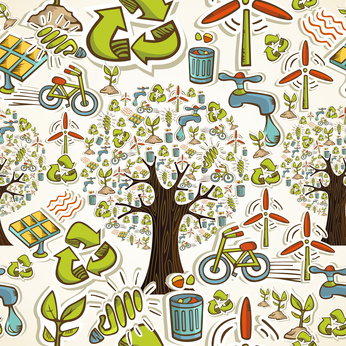 Company’s 2013 “Committed to More” Corporate Sustainability Report highlights energy, efficiency and humanitarian achievements
Company’s 2013 “Committed to More” Corporate Sustainability Report highlights energy, efficiency and humanitarian achievements- More commitment to transparency by becoming one of first U.S. companies to adopt new comprehensive level of sustainability reporting
- More Reductions as absolute carbon emissions decrease 1.5%
- More lower-emission vehicles hitting the road as fleet logged 55 million miles and avoided the use of 5.8 million gallons of conventional gasoline and diesel
- More than 1.5M gallons of fuel saved annually through ORION Route Optimization
- More sustainable supply chain options for customers like carbon neutral shipping for packages, documents, cargo or freight to anywhere in world
- More resilient global communities through humanitarian aid as UPS enabled 250 humanitarian shipments across 46 countries
Atlanta – United Parcel Service of America, Inc. (UPS) released its 12th Annual Sustainability Report on July 30 announcing that in addition to reducing overall carbon emissions in 2013, the company also met its 2016 goal of reducing its air and ground fleet’s carbon intensity by 10 percent three years early. Thus, the company has set a new goal to achieve a 20 percent reduction in carbon intensity from transportation by 2020.
The 2013 report documents UPS’s ongoing efforts to increase sustainability through its “Committed to More” approach. Noting that sustainability is often discussed in terms of doing less, UPS is committed to efficiently providing more – for customers, the environment, and communities around the world. The report also highlights the continued achievement of the company’s greenhouse gas (GHG) reduction goals, as well as the measureable impact of its humanitarian initiatives.
“As a global logistics company dependent on vehicles and fuel to move nearly 17 million packages and documents a day, sustainability and growth are inextricably linked,” said Scott Davis, UPS Chairman and Chief Executive Officer. “Our ability to grow our global shipping volumes and reduce total carbon emissions should be a signal to business that it is possible to do more for the environment while also serving more customers and adding more value.”
More Reductions in Carbon Emissions
For the second year in a row, successful execution of UPS’s global greenhouse gas reduction strategy allowed the company to deliver more goods, while generating fewer emissions. In 2013, absolute carbon emissions decreased 1.5 percent from 2012, even as global shipping volume increased 3.9 percent during the same timeframe.
More Lower-Emission Vehicles Hitting the Road
UPS’s current 3,647 alternative fuel and advanced technology vehicles worldwide continue to drive GHG reductions and serve as a “rolling laboratory” to test, optimize and deploy new-generation vehicles. In 2013, UPS ramped up use of cleaner-burning natural gas vehicles across the country, adding 249 heavy-duty tractors fuelled by liquefied natural gas (LNG) by year’s end. The company is on target to deploy more than 1,000 LNG tractors by the end of 2014. Additionally, UPS’s current natural gas tractor fleet is running more than 2 million miles per week.
In 2013, UPS’s alternative fuel and advanced technology vehicles worldwide logged 55 million miles and avoided the use of 5.8 million gallons of conventional gasoline and diesel. Since 2000, the fleet has logged more than 350 million miles and avoided using 34.5 million gallons of conventional gasoline and diesel. The savings put the company well on its way to reaching a goal of driving 1 billion miles in alternative fuel and advanced technology vehicles by the end of 2017.
More Than 1.5M Gallons of Fuel Saved Annually through ORION Route Optimization
Introduced in 2013, the On-Road Integrated Optimization and Navigation (ORION) system is the brains and backbone of UPS’s GHG reduction strategy. ORION uses algorithms and fleet telematics to determine the optimum routes for UPS drivers to pick up and deliver that day’s packages. Using ORION, UPS optimized 10,000 routes in 2013 which is expected to result in savings of more than 1.5 million gallons of fuel and 14,000 metric tons of CO2 emissions.
More Sustainable Supply Chain Options for Customers
To meet growing customer demand for sustainable options that balance speed and cost while doing more for the environment and society, UPS continues to expand sustainable shipping and supply chain offerings to help customers do more to measure, mitigate and manage their climate impacts:
- Carbon Impact Analysis – UPS can calculate how many metric tons of greenhouse gases arise from customer’s shipping activity and advise on how to operate their logistics more efficiently.














